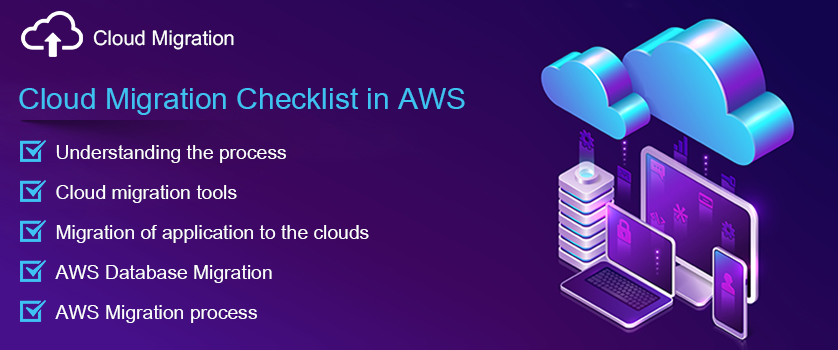


When we mention migration, it simply refers to movement from legacy systems to a cloud infrastructure. Amazon Web Services has emerged as one of the most trusted and secure cloud platforms enabling the safest ways to save data, run applications, and provision a wide range of computing services on the cloud. AWS cloud, like any other cloud platform, offers a host of services by which organizations can migrate whole or part of their applications to the cloud.
In this context of the discussion, we aim to familiarize our readers with some of the key information that forms a part of the AWS checklist.
All factors that influence the decisions pertaining to the cloud migrations process are listed as follows:
Migration must be performed by an expert in AWS, who has ample experience in migrating so that there is no major disruption in the operational flow of business. This checklist is the basic protocol that needs to be followed by organizations, which are aiming for migrating their application to cloud environments.
Several cloud migration tools are used for migrating applications to the cloud. Few commonly used AWS cloud migration tools are listed as follows:
Migration to the cloud is rather an iterative process that keeps evolving as an organization evolves over time with the development of new skills, processes, tools, and so on. Cloud migration adds benefits such as business agility, cost efficiency, higher productivity which leads to a greater degree of operational efficiency.
Ideally, an organization must plan on cloud migration for fewer applications and then gradually move to the complete environment, considering parameters such as cost, scalability, tools for performance control, security, and business continuity to fetch the maximum benefits.
AWS offers dedicated database migration services to ensure an organization’s database is fully migrated, operational, and secure.
Every organization follows a different approach to cloud migration due to the varied factors that influence the decision to migrate to the cloud. AWS cloud architects can provide efficient solutions for migration to the cloud by offering best-fit solutions that meet all business requirements and ensure smooth functioning of the internal process.
AWS cloud migration is ideally carried out in the following phases –
This is the first step towards migration to the cloud, wherein the current state of application architecture is taken into consideration while planning a project migration activity. All aspects with respect to the stakeholders involved in the business and how will they be affected should be considered to make the process smooth, and ensure uninterrupted operational efficiency. A migration plan should always include a rollback strategy because often due to unforeseen reasons there could be a situation where the entire application or part of it fails to migrate to the cloud and in such cases, it should be rolled back to its previous environment setup.
The analysis phase comprises identifying and understanding the dependencies of the applications and focuses on defining priorities for migrating to the cloud. Less complex and critical applications should ideally be moved first, followed by the more critical ones.
After the migration is done, the next and final phase includes addressing individual components of an application. There are six ‘R’s’ that act as references for migrations. We define the six ‘R’s’ briefly as follows:
Migrating to the AWS cloud could be beneficial to a business in a wide variety of ways. AWS is a very cost-efficient mechanism, allowing auto-scaling of resources, which means paying only for services that are being used. Transformation to the cloud architecture is also a step towards achieving team productivity by providing a consolidated view of the work in progress and adds agility for any business, as it becomes much faster to market their products to gain competitive advantage.
It is recommended that a business must plan on KPI’s (Key Performance Indicators), which might be helpful to measure and validate the process of migration has been successful.